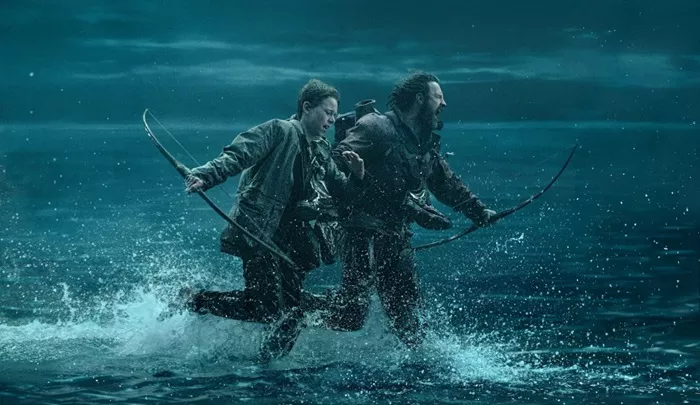Alfie Williams and Aaron Taylor-Johnson in a tense escape scene from 28 Years Later. (Sony Pictures)
The highly anticipated sequel to the groundbreaking 2002 horror film 28 Days Later has finally arrived, reuniting director Danny Boyle and writer Alex Garland nearly three decades later. 28 Years Later delivers a chilling and brutal continuation of the franchise, earning its place as one of the most intense and harrowing films of the year.
After the original introduced audiences to its terrifying, fast-moving zombies, the genre has since expanded with acclaimed series such as The Walking Dead and The Last of Us, as well as films like Train to Busan. However, Boyle and Garland’s latest installment brings a fresh dose of suspense and existential dread, recalling the unforgettable impact of their original work.
A Harrowing Return to a Post-Apocalyptic England
Set roughly 30 years after a devastating rage virus outbreak left Britain in ruins, 28 Years Later explores a world abandoned to decay and chaos. Survivors live isolated, with no hope for international rescue as quarantine ships patrol nearby waters, ensuring no one escapes the island’s grim fate.
At the heart of the story is a small community on an island off England’s coast, protected by tidal barriers, fortified walls, and resourceful grassroots designs crafted by the production and costume team. The narrative centers on 12-year-old Spike (Alfie Williams), who faces a rite of passage involving a journey to the mainland—a forbidden and perilous trek with a strict rule: no rescues if you do not return.
Spike’s father, Jamie (Aaron Taylor-Johnson), a brash but loving figure, accompanies him as they venture into the mainland. The two soon encounter horrific challenges, including infected humans and terrifying new virus variants, notably the fearsome “Alpha.” Meanwhile, a mysterious and ever-burning fire on the horizon lures Spike away from safety, igniting his curiosity despite the looming dangers.
Relentless, Uncompromising Horror
As a zombie film, 28 Years Later stays true to the brutal and savage style that defined the original. Boyle and Garland unleash scenes of graphic violence, sparing no one—not even its teenage protagonists. The film’s explosive intensity is underscored by striking visuals that often feel like a towering mountain of bones and blood erupting on screen.
One standout sequence is a masterfully edited montage of Spike and Jamie’s arrival on the mainland, blending footage of deserted beaches with archival clips of wartime Shakespeare adaptations and evocative poetry. This artistic choice serves as a sobering reminder of violence, lost innocence, and societal collapse.
Immersive Cinematography and Sound Design
Cinematographer Anthony Dod Mantle, renowned for his innovative use of digital cameras on the original film, returns with a bold new approach, incorporating 20 modified iPhone 15s to create “bullet time” effects reminiscent of The Matrix. His use of the widescreen 2.76:1 aspect ratio offers both grotesque close-ups and sweeping rural landscapes, emphasizing the vulnerability of survivors amid vast, hostile environments.
Complementing the visuals is a haunting soundscape composed by the Scottish hip-hop trio Young Fathers. Their hypnotic, relentless score blends mechanical hums, screeching crows, chilling screams, and primal roars, shattering the tranquility of the British countryside. The sound design blurs the line between music and atmosphere, heightening the sense of pervasive dread throughout the film.
A Fresh Take on a Familiar Genre
Despite the saturation of zombie-themed media—from The Walking Dead to The Last of Us—28 Years Later stands out as a uniquely original monster movie. Its sharp editing, powerful soundtrack, and gripping story paint a vivid portrait of humanity’s desperate struggle for survival.
Boyle, Garland, and their talented cast, led by the impressive young Alfie Williams, successfully reconnect their original vision with contemporary realities, crafting a terrifying world that challenges viewers to face fear head-on—and perhaps lose a few nails in the process.
Related Topics
- Ana de Armas Steals Spotlight in ‘Ballerina’
- Ranking All Six Karate Kid Films: A Definitive Review
- Michelle Williams Returns to Broadway Despite Tony Snub

